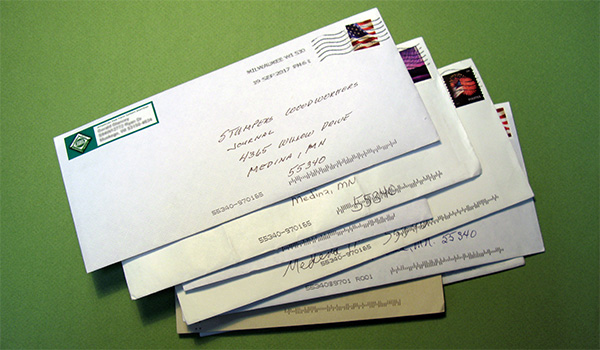
In the last issue of the eZine, Chris Marshall shared a video highlighting a reader’s trick for Setting Up Narrow Rip Cuts with Drill Bits. Another reader had some additional suggestions. – Editor
“Chris Marshall’s smart trick for accurate rip fence setting is handy, but could be more reliable with a couple of extra points. First, for better accuracy, use the shank of the drill only. Secondly, for better accuracy still, use two drills from the same maker, one on the infeed and one on the outfeed, and make sure both bear on the tip of a tooth set towards the fence, not away from it. Failure to do this could make a difference of up to a millimeter in the cut width.
“I also think it would have been helpful to Ralph Libby to know that ripping his drawing table stock to quite a narrow width, then reversing alternate strips so that the end grain forms a wave-like pattern, will improve the stability of the final work top and limit the amount of work required to get the top flat for a start.” – Graeme Coles
If You Install a Larger Motor…You’ll Have a Larger Motor
Also in last issue’s Q&A, the Woodworker’s Journal experts addressed a question from a reader named Ned on “Should I Install a Larger Saw Motor?” Even if that doesn’t work out, says this response, Ned might still find an advantage in the new motor. – Editor
“Perfect reasoning and encouraging Ned to make the swap. I believe that his current saw can be wired for 230-volt operation, so everything is there for the new motor. Both [Rob] and Chris missed one other vital point. Should the motor swap not work out for whatever reason, Ned would have a 3hp motor, single-phase. He could then buy a used three-phase cabinet saw and install the motor. The only trick would be to NOT use the L3 connections (blue) wiring inside the saw and install the appropriate power plug.” – Rich Flynn
Making Hook-and-Loop Discs Last
And, we heard more about hook-and-loop sanding discs, as discussed in eZine 362’s Feedback section (and eZine 361’s Q&A). – Editor
“I bought a Porter-Cable random orbital sander as soon as they came on the market and loved it. At last, a sander that could both really remove material and still provide a finish sanding job. The hook-and-loop surface on the disk lasted for years before it failed. I gulped at the price, but bought a new backing disk. Ah, but it lasted less than half the original. I said, ‘Well, it’s not the original,’ whatever that meant, and went on. But I thought about it. In both cases, the failure occurred after/during trying to finish a job before having to change paper. A dull sheet and extra pressure generates tremendous heat. Heat will destroy the disk. Check your disk temperature now and then by lifting it quickly from the wood you are sanding and testing the temperature of the sandpaper. It may well be warm, but if it is too hot for your hand, it is too hot for your [plastic] hooks on the disk, and may even melt the bond on the foam. Keep good paper on the disk, and let the machine do its job with only slight pressure beyond that necessary for guidance.” – Wayman Patterson
Acetone: A Safety Concern
Wayman also expressed a safety concern about using acetone to remove a finish, as suggested in last eZine’s Feedback section. – Editor
“As to the suggestion to remove old tung oil finish with acetone or naptha, please be careful. Naphta can be dangerous, but acetone is deadly. It is terribly flammable, will flash into violent flame at the least chance. A lab technician locally dropped a small beaker, was instantly engulfed in flame and perished before anyone could help her. Even if you have to hand scrape the entire cabinet, don’t use acetone on it anywhere but outdoors, and then very carefully. I personally would not recommend that much acetone.”
– Wayman Patterson
Tulsa, OK





